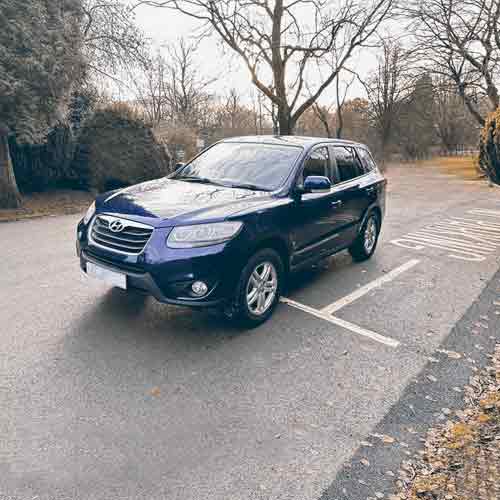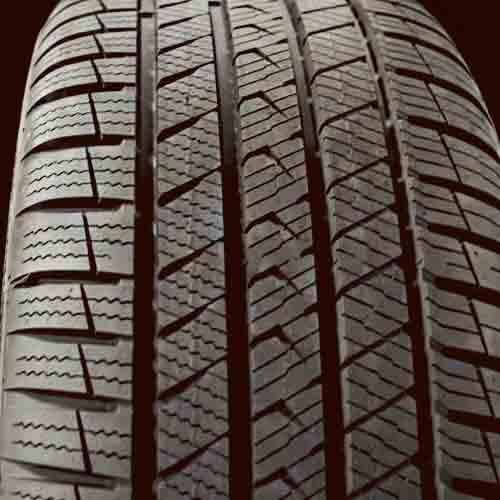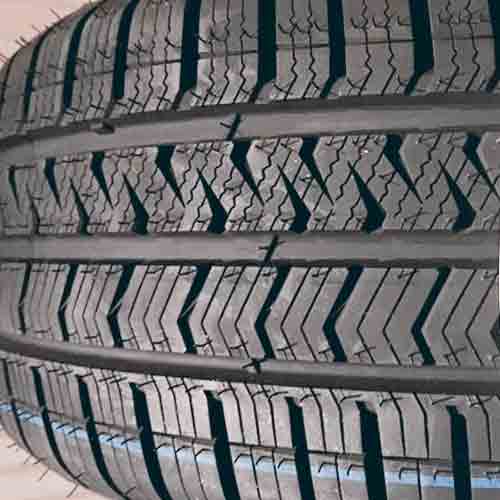Exploring the Vredestein Quatrac 5 and its successor, the Quatrac Pro, let’s take a comparative look into their performance in the grand touring all-season category. With noted improvements in wet grip and snow handling, let’s objectively determine which tire better suits your needs.

Main Highlights
So overall, the Quatrac Pro excels in:
- Wet traction and hydroplaning resistance.
- Winter grip with better snow and ice performance.
- Reduced noise and varied frequency design.
- Enhanced comfort and shock absorption.
Whereas Quatrac 5 excels in:
- Shorter dry braking distances.
- Superior lateral grip during turns.
- Quicker handling and steering responsiveness.
- Better overall dry surface performance.
Available Sizes
Vredestein Quatrac Pro comes in 17 to 21 inches, with sizes having following specs.
- Speed ratings: H, V, W and Y.
- Load ratings: SL/XL, (though majority of sizes are XL).
- Weight range: 19 to 37 lbs (heaviest size is 285/40/R22, and the lightest is 205/40/R17).
- Tread depth: 10/32″ on all.
- UTQG: 400 A A.
- Treadwear warranty: 50k miles.
- Internal construction: Single ply polyester, 2 steel belts, and a single ply polyamide reinforcement.
Detailed Review of Quatrac Pro: https://tiredriver.com/vredestein-quatrac-pro-review/
Vredestein Quatrac 5 on the other side, used ot come in 14 to 21 inches with following specs.
- Speed ratings: H, V, and W.
- Load ratings: SL/XL.
- Weight range: 14 to 40 lbs.
- Tread depth: 10/32″ on all.
- UTQG: 400 A A.
- Treadwear warranty: 45k miles.
- Internal construction: Same as the Quatrac Pro.
Wet Performance
Wet performance focuses on the tire’s skill in clearing water from the tread, a factor that influences traction and hydroplaning resistance. Let’s assess the performance in these critical areas.
Wet Traction
Grooves in the tread are essential for displacing most water from the road surface, yet some residual moisture can linger, potentially leading to slippage beneath the tread blocks.
This is where sipes are invaluable, acting as miniature water reservoirs.
Essentially, these sipes absorb moisture trapped between the tread and the road through flexing actions, creating a suction effect. And as the tire rotates, these sipes expel the trapped water particles.
Now, in this comparison, the Vredestein Quatrac Pro not only surpasses the Quatrac 5 but also ranks as the top wet performer in my list of premium grand touring all-season tires, which you can check out here: https://tiredriver.com/best-grand-touring-all-season-tires/

This superiority is largely due to its abundance of linear and wave-patterned sipes. Additionally, the tire’s relatively softer rubber composition enhances the sipes’ functionality, allowing them to absorb water more effectively due to increased flexibility.
In contrast, the Quatrac 5, with its stiffer rubber composition, performs marginally better on dry surfaces but falls short in overall wet performance, struggling not just with wet grip but also with hydroplaning resistance.
Aquaplaning Resistance
Hydro, or aquaplaning, occurs when water builds up between the tread and the road, causing the tires to lose traction and skim over the water’s surface.
Now, here, since grooves primarily expel water, their efficiency is crucial in determining a tire’s hydroplaning resistance.
Having said that, while both Vredestein variants feature four wide circumferential grooves, the Quatrac Pro still demonstrates superior performance, mainly because of its intricate interconnection of grooves, facilitating not just linear but also lateral water expulsion.
And so as the tire takes out a greater volume of water, there’s consequently less residual moisture for the sipes to manage. Meaning, this is one more reason why Quatrac pro offers better wet traction overall.
Overall Dry Performance
We’re about to delve into the assessment of dry tire performance, focusing on the grip and steering response. Let’s consider them all one by one.
Directional Grip
Longitudinal grip delves into a tire’s effectiveness at maintaining traction while moving forward, primarily hinging on the extent of the tire’s central area interacting with the pavement.
We quantify this traction through observing braking distances.
Now, regarding the contenders.
In comparative tests, the Quatrac 5 notably excels in braking efficacy, consistently halting around 2 feet shorter than its successor, during deceleration from 60 mph, as per my evaluations.

Why does this happen? Primarily for two reasons:
- Enhanced Surface Contact: Unlike the Quatrac Pro, which has interlocking grooves, the predecessor actually offers a more expansive central tread contact-area.
- Optimized Weight Distribution via a Rounded Contact Patch: Despite its greater weight, the Quatrac 5’s optimized contact patch (with 2 fatter ribs in the middle), facilitates a more uniform distribution of weight across the tread lugs.
But why does this uniform weight distribution matter? It’s because it reduces momentum inertia, simplifying the tire’s stoppage. Essentially, diminished momentum translates to a swifter stopping capability.
Overall Handling
In assessing dry handling of tires, it’s crucial to consider both lateral grip and steering responsiveness.
Focusing first on “lateral” grip, this aspect pertains to the tire’s ability to adhere “side-to-side” on the road, with the tire’s shoulders being pivotal here.
But why shoulders? Well, because during turns, the load (on the tire), shifts towards the tread’s outer edges.
Now, among the contenders here, the Vredestein Quatrac 5 notably excels in lateral traction. Thanks to its well-designed, compact shoulder blocks, it achieves superior lateral g-force outcomes.
And this combined with its more immediate steering feedback, the Quatrac 5 consistently delivers over half of a second quicker lap times in my testing.
This superior performance stems from increased rubber contact with the road and a more streamlined tread design on the shoulders, coupled with a stiffer rubber mix.
These elements prevent the lugs from flexing excessively, which is vital because, when lugs bend, they need time to return to shape, causing a delay between steering input and tire reaction.
In contrast, while the Quatrac Pro is only slightly behind, it doesn’t quite match up in terms of lateral grip and steering responsiveness.
Overall Ride Comfort
Driving comfort is influenced by two primary elements: the tread noise and the tire’s efficiency in cushioning against road bumps. Let’s take a detailed look at each of these.
Noise Comfort
The tread pattern of a tire is a critical factor in the amount of noise it produces while in motion. This noise is predominantly due to air particles colliding with the tire’s surface, entering mainly through shoulder voids.
In simpler terms, when air particles hit the tire, they generate the primary source of noise, which then echoes within the tread grooves, leading to secondary, in-groove resonance.
In this regard, the Vredestein Quatrac Pro excels in reducing noise, chiefly attributed to its sophisticated tread design that generates variable tones.
Essentially, the tire’s tread is crafted to ensure that air particles impacting different sections produce a spectrum of tones and frequencies. These diverse frequencies then interact to neutralize each other, effectively diminishing in-groove resonance and overall noise.
Road Smoothness
Ride comfort is significantly influenced by a tire’s ability to absorb shocks from road irregularities, determined by the rubber’s composition and the tire’s tread design.
In this aspect, the Quatrac Pro, with its softer winter traction-focused rubber, slightly edges out in providing better overall comfort.
This is due to its more compliant tread, where the lugs are designed to flex more. While this may affect steering responsiveness (on dry roads), it utilizes the energy from vibrations to flex the lugs, effectively absorbing them.
This ability to adapt allows the tire to better mold to the contours and bumps of the road, thereby absorbing impacts and enhancing the overall comfort of the ride.
Winter Traction
All-season tires, like those in grand touring category like these boys here, are pretty great when it comes to winter conditions. They handle well, brake nicely, and get you moving on snowy and icy roads.
Now, the Quatrac Pro has made some cool advancements from its older version, showcasing a 5% boost in snow handling, particularly.
So, why is it better, especially since both tires come with that 3 peak mountain snowflake rating? Well, the newer variant superb performance here is credited to its softer rubber mix and loads more biting edges and sipes.
This setup isn’t just good for light snow, where it creates great snow-on-snow contact, but it’s also a champ on ice. You see, those extra siping slits work wonders by providing tiny, micro-level grip.
On the flip side, the Quatrac 5 doesn’t quite hit the mark, mainly because of its harder rubber mix, which doesn’t play well with the traction features on its tread.
Basically, when it gets colder, the tire’s rubber gets stiffer and less grippy.
And about the snow contact thing, it’s like making a snowball, the better the snow sticks to itself, the better it sticks to the tire, which means better control for you.
Fuel Efficiency
Tire fuel efficiency is shaped by a bunch of things like weight, what they’re made of, and the pattern on the tread, all affecting rolling resistance.
The Quatrac Pro does a neat job reducing rolling resistance by 5% compared to the older model. But, there’s still room for improvement in its overall performance.
The thing is, its slightly softer, stickier rubber mix although provides superb winter and wet traction, it makes the lugs bend more, even though it’s got a solid foundation underneath the tread blocks.
This bending of rubber means some of the energy that could move you forward gets lost, mostly turning into heat and changing the shape of the tread.
So, even though the Quatrac Pro is a step up in fuel efficiency, when you stack it against other tires in its class, it doesn’t quite hit the top marks. It’s not really a shocker, given the grip it offers, but it’s something to keep in mind if you’re eyeing up your fuel budget.
To Conclude
In summary, the Quatrac 5 outperforms its successor, the Quatrac Pro, in dry performance due to its superior braking and lateral grip, thanks to a more expansive central tread and well-designed shoulder blocks.
And while the Pro excels in wet conditions with its enhanced siping and softer rubber, it falls slightly behind in dry handling and fuel efficiency.
The Pro’s softer composition, though beneficial for comfort and winter traction, leads to increased rolling resistance and energy loss. Both tires showcase their strengths, with the Quatrac 5 leading in dry performance and the Pro in wet and winter conditions, but there’s a trade-off between grip and fuel economy, particularly for the Quatrac Pro.